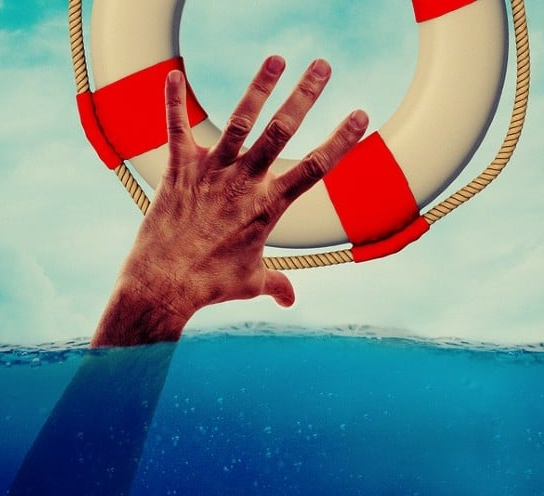Imagine the adrenaline rushing through your veins as you watch a crew member fall overboard into the vast expanse of the open sea. Panic sets in, but you quickly remind yourself of the importance of staying calm and springing into action. In this article, we will explore the essential steps and procedures to handle a man-overboard situation, equipping you with the knowledge and confidence to navigate such an emergency with precision and efficiency.
Prevention Measures
Proper crew training and drills
One of the most important prevention measures when it comes to handling a man-overboard situation is ensuring that the crew members are properly trained and equipped to respond quickly and effectively. This includes conducting regular drills where the crew practices the necessary procedures for a man-overboard situation. By familiarizing themselves with the actions they need to take in such an event, the crew can minimize the chances of accidents occurring and ensure a faster response time.
Establishing safety protocols and guidelines
Another crucial prevention measure is the establishment of safety protocols and guidelines onboard the vessel. These protocols should outline the specific procedures to follow in the event of a man-overboard situation, including the roles and responsibilities of different crew members. By clearly defining these protocols and ensuring that they are consistently communicated and followed, the crew can reduce the risk of accidents and increase their ability to respond effectively.
Using safety equipment and devices
Using appropriate safety equipment and devices is also essential in preventing man-overboard incidents. This includes providing crew members with personal flotation devices (PFDs) or life jackets and ensuring that they are wearing them at all times when working near the water. Additionally, the vessel should be equipped with man-overboard recovery devices such as life buoys, throw bags, and rescue slings, which can be readily accessible in case of an emergency. By having these safety measures in place, the crew can be better prepared to handle a man-overboard situation and increase the chances of a successful rescue.
Initial Response
Designate a lookout and yell ‘man overboard!’
The immediate response in a man-overboard situation is crucial for ensuring a swift rescue. The first step is to designate a lookout, preferably someone who has received training in identifying and responding to man-overboard incidents. This lookout should keep their eyes on the person in the water at all times and alert the rest of the crew by yelling ‘man overboard!’ This clear and concise command will immediately notify everyone onboard that a man-overboard situation has occurred, prompting them to take action.
Throw a life buoy or flotation device
Once the man-overboard alert has been sounded, the next step is to throw a life buoy or flotation device towards the person in the water. This should be done as quickly and accurately as possible to provide them with immediate assistance and aid in keeping them afloat. Crew members should be trained in throwing techniques to ensure the best chances of reaching the individual in distress. It is important to note that throwing a flotation device should not delay the activation of further rescue measures.
Activate man-overboard alarm or alert the bridge
Simultaneously with throwing a flotation device, it is crucial to activate the man-overboard alarm or alert the bridge immediately. This alarm will initiate a series of actions, including notifying the vessel’s crew and the bridge team that a man-overboard situation has occurred. The bridge team will then be able to start coordinating the rescue response, which can involve adjusting the vessel’s course, launching rescue crafts, and alerting external authorities if necessary. Promptly activating the man-overboard alarm is vital for initiating a quick and efficient rescue operation.
Executing the Rescue
Initiating search patterns
Once the initial response steps have been completed, the crew should focus on executing the rescue operation. This includes initiating search patterns to locate the person in the water. Search patterns can vary depending on the specific circumstances and vessel capabilities but often involve conducting systematic sweeps in designated areas using visual observation, radar, and other available resources. The goal is to cover the area as quickly and thoroughly as possible to increase the chances of locating the individual and initiating their rescue.
Launching rescue craft or deploying life rafts
In situations where the vessel is equipped with rescue craft, such as fast rescue boats or tenders, it is important to launch them promptly to aid in the rescue operation. These craft can provide a faster means of reaching and retrieving the person in distress. If the vessel does not have rescue craft, deploying life rafts or other suitable flotation devices can also be an effective method of providing immediate assistance. The decision to launch rescue craft or deploy life rafts should be based on the specific circumstances and the vessel’s capabilities.
Deploying man-overboard recovery devices
Alongside launching rescue craft or deploying life rafts, deploying man-overboard recovery devices can greatly aid in the rescue operation. These devices can include items such as retrieval poles, rescue slings, and throw bags, which are designed to assist in safely recovering the person in distress from the water. Crew members should be trained in the proper use of these devices to ensure that they can be deployed effectively and that the individual can be brought back onboard the vessel as quickly and safely as possible.
Communication and Coordination
Alerting the bridge and crew
Effective communication and coordination are essential during a man-overboard situation. Once the initial response steps have been taken, the crew should alert the bridge team about the ongoing situation and provide them with all relevant information, such as the exact location and current condition of the person in the water. This enables the bridge team to make informed decisions and coordinate the rescue operation effectively. Furthermore, crew members onboard the vessel should also be kept informed and updated to ensure smooth collaboration and seamless execution of the rescue plan.
Reporting and recording the incident
Following a man-overboard incident, it is crucial to report and record the details of the event. This includes documenting the circumstances leading up to the incident, the actions taken during the rescue operation, and any lessons learned. These reports provide valuable information for analysis and evaluation, allowing for a better understanding of what occurred and how to improve future response efforts. By maintaining thorough and accurate records, the crew can contribute to the ongoing safety and well-being of everyone onboard.
Coordinating with external authorities if necessary
In certain situations, it may be necessary to coordinate with external authorities, such as coast guards or search and rescue teams. This is particularly true when operating in areas with stringent maritime regulations or when additional resources and specialized expertise are required. Effective communication with these authorities ensures that the proper assistance is provided and that the rescue operation is conducted in accordance with established protocols. Coordinating with external authorities demonstrates a commitment to prioritizing the safety and welfare of those involved in the incident.
Medical Response
Providing immediate medical attention
Once the person in distress has been successfully retrieved from the water, providing immediate medical attention is of utmost importance. Crew members should be trained in basic first aid and should assess the individual’s condition to identify any immediate medical needs. These can include providing oxygen, stopping bleeding, stabilizing fractures or injuries, and addressing any other life-threatening conditions. The prompt and skilled administration of medical attention can significantly improve the chances of a successful recovery.
Using first aid procedures
First aid procedures should be employed to stabilize and treat any injuries or medical conditions until further medical assistance is available. These procedures can include cleaning and dressing wounds, immobilizing fractures, managing shock, and providing pain relief. It is essential that crew members are trained in these procedures to ensure that the injured individual is receiving the appropriate care and that their condition does not worsen during the post-rescue phase.
Initiating CPR or rescue breathing if required
In severe cases where the individual is not breathing or has no pulse, it may be necessary to initiate cardiopulmonary resuscitation (CPR) or rescue breathing. Crew members trained in CPR should follow the established protocols and guidelines to provide the necessary chest compressions and rescue breaths. This immediate response can help maintain vital blood flow and oxygenation until professional medical assistance can be obtained. It is crucial to continue these life-saving techniques until a pulse is detected, professional medical personnel take over, or it is determined that further efforts will not be effective.
Supporting the Victim
Supplying appropriate clothing and blankets
After a man-overboard incident, it is important to ensure the comfort and welfare of the victim. This can include supplying appropriate clothing and blankets to help regulate body temperature. Hypothermia can be a significant concern in such situations, and providing warm and dry clothing can aid in preventing or addressing this condition. The victim’s well-being should be prioritized, and every effort should be made to provide them with the necessary support and resources to aid in their recovery.
Offering emotional support and reassurance
Experiencing a man-overboard situation can be incredibly traumatic for the individual involved. Offering emotional support and reassurance is a crucial part of helping them recover and regain their well-being. Crew members should be trained in effectively communicating with and comforting individuals who have been through a traumatic event, providing them with reassurances about their safety and addressing any concerns they may have. This emotional support can greatly contribute to the victim’s overall healing process.
Providing access to counseling services
In some cases, the emotional impact of a man-overboard incident may be long-lasting, and the individual may benefit from professional counseling services. Providing access and resources for counseling can facilitate the healing process and help the victim work through any psychological or emotional challenges they may face following the incident. It is important to remember that the recovery from a traumatic event is not solely physical, and the psychological well-being of the victim should also be a priority.
Post-Rescue Procedures
Conducting debriefing sessions
After a man-overboard incident, conducting debriefing sessions is crucial for the crew to reflect on their response and identify areas for improvement. These sessions provide an opportunity to discuss what went well, what could have been done differently, and any lessons learned. Open and honest communication is encouraged during debriefing sessions, as it allows for a comprehensive evaluation of the incident and the crew’s performance. By conducting regular debriefing sessions, the crew can continuously enhance their response capabilities and enhance overall safety.
Completing incident reports and documentation
Upon the conclusion of a man-overboard incident, it is essential to complete incident reports and documentation. These reports should provide a detailed account of the incident, including the initial response, the rescue operation, any medical assistance provided, and the aftermath. By thoroughly documenting the incident, the crew contributes to the organization’s safety management system, enabling thorough analysis and evaluation of the event. This documentation also ensures compliance with legal and regulatory obligations and can be used for future training and reference purposes.
Reviewing and updating safety procedures
Following a man-overboard incident, it is vital to review and update the vessel’s safety procedures based on the lessons learned. This involves analyzing the sequence of events, identifying any weaknesses or gaps in the response, and implementing changes to prevent similar incidents in the future. The feedback from the crew, the results of the debriefing sessions, and the analysis of the incident reports should inform these updates. By regularly reviewing and updating safety procedures, vessels can continuously improve their preparedness and response capabilities, safeguarding the lives and well-being of their crew.
Legal and Compliance Obligations
Complying with relevant maritime laws and regulations
The handling of a man-overboard situation is subject to various maritime laws and regulations that aim to ensure the safety of individuals at sea. It is crucial for vessels and crew members to be aware of and comply with these legal requirements. Failure to adhere to these laws and regulations can result in serious consequences, including penalties and legal liabilities. By demonstrating a commitment to compliance, vessels can prioritize the safety and security of their crew and passengers.
Cooperating with investigations and inquiries
In the event of a man-overboard incident, it is possible that investigations or inquiries will be conducted to determine the cause and prevent similar incidents in the future. Vessels and crew members must cooperate fully with these investigations, providing all necessary information and supporting the process to the best of their abilities. Transparent and open cooperation demonstrates a commitment to identifying the root causes of the incident and preventing its recurrence, thereby contributing to overall maritime safety.
Taking necessary disciplinary actions
In situations where negligence or non-compliance with safety protocols contributed to a man-overboard incident, it may be necessary to take disciplinary actions. These actions can include retraining, suspension, or, in severe cases, termination of employment. By holding individuals accountable for their actions or lack thereof, vessels can reinforce the importance of following safety procedures and promote a culture of responsibility and accountability. This commitment to disciplinary actions enhances the overall safety culture onboard and reduces the likelihood of future incidents.
Training and Simulations
Organizing regular training exercises
Maintaining preparedness for man-overboard incidents requires regular training exercises. These exercises should be conducted at scheduled intervals and involve the entire crew, ensuring that everyone is familiar with their roles and responsibilities. The training should emphasize the execution of proper procedures, the use of safety equipment, and effective communication and coordination. By organizing regular training exercises, vessels can enhance their crew’s response capabilities, minimize human error, and increase the chances of successful rescues.
Conducting man-overboard simulations
In addition to general training exercises, conducting specific man-overboard simulations is essential. These simulations aim to replicate real-life scenarios as closely as possible, allowing the crew to practice their response strategies and test the effectiveness of their procedures. By simulating different conditions and scenarios, such as night operations or adverse weather conditions, the crew can be better prepared to handle a wide range of man-overboard situations. Simulations also provide an opportunity to identify areas for improvement and refine response strategies.
Evaluating and improving response capabilities
To ensure continual improvement, vessels should rigorously evaluate their response capabilities and make necessary improvements. This evaluation should involve analyzing the results of training exercises and simulations, reviewing incident reports, and soliciting feedback from crew members. By identifying strengths and weaknesses in their response capabilities, vessels can implement targeted improvements through additional training, equipment upgrades, or procedural adjustments. Regular evaluation and improvement contribute to the overall effectiveness of the crew’s response to man-overboard incidents.
Conclusion
Handling a man-overboard situation demands a combination of preparedness, quick response, and ongoing refinement of procedures. Prevention measures, such as proper crew training, safety protocols, and the use of safety equipment, play a crucial role in minimizing the occurrence of man-overboard incidents. The initial response is characterized by designating a lookout, immediately alerting the crew, and deploying life-saving equipment. Executing the rescue involves search patterns, launching rescue craft, and deploying man-overboard recovery devices.
Communication and coordination are vital throughout the rescue operation, ensuring that the bridge and crew are alerted, the incident is reported and recorded, and external authorities are coordinated with if necessary. Medical response involves providing immediate medical attention, applying first aid procedures, and initiating CPR or rescue breathing if required. Supporting the victim includes supplying appropriate clothing and blankets, offering emotional support and reassurance, and providing access to counseling services.
Post-rescue procedures encompass conducting debriefing sessions, completing incident reports, and reviewing and updating safety procedures. Legal and compliance obligations involve complying with maritime laws and regulations, cooperating with investigations and inquiries, and taking necessary disciplinary actions. Training and simulations are instrumental in maintaining preparedness and enhancing response capabilities, which must be continuously evaluated and improved.
In conclusion, the critical importance of preparedness and quick response cannot be overstated in handling man-overboard situations. By continuously evaluating and refining procedures, vessels can safeguard the lives and well-being of their crew members, promoting a culture of safety at sea.





